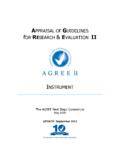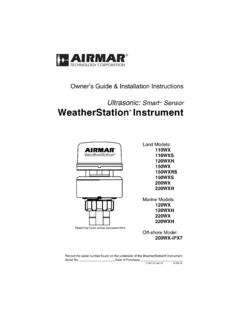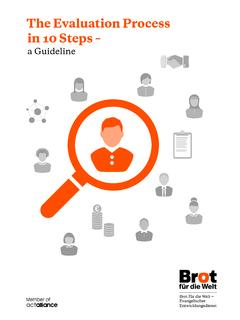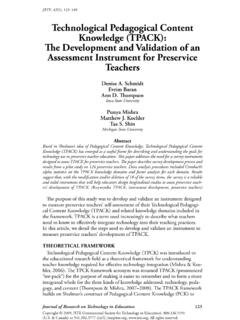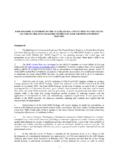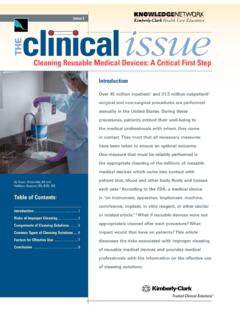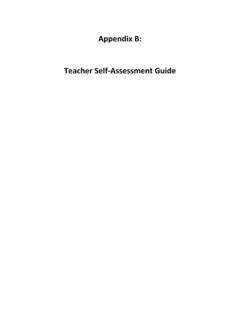Transcription of CHAPTER 1: RESIDENT ASSESSMENT INSTRUMENT
1 CMS s RAI Version Manual CH 1: RESIDENT ASSESSMENT INSTRUMENT Revised--December 2002 Page 1- 1 chapter 1: RESIDENT ASSESSMENT INSTRUMENT Overview of the RESIDENT ASSESSMENT INSTRUMENT (RAI) Providing care to residents with post-acute and long-term care needs is complex and challenging work. It utilizes clinical competence, observational skills, and ASSESSMENT expertise from all disciplines to develop individualized care plans. The RESIDENT ASSESSMENT INSTRUMENT (RAI) helps facility staff to gather definitive information on a RESIDENT s strengths and needs, which must be addressed in an individualized care plan. It also assists staff to evaluate goal achievement and revise care plans accordingly by enabling the facility to track changes in the RESIDENT s status.
2 As the process of problem identification is integrated with sound clinical interventions, the care plan becomes each RESIDENT s unique path toward achieving or maintaining his or her highest practicable level of well-being. The RAI helps facility staff to look at residents holistically - as individuals for whom quality of life and quality of care are mutually significant and necessary. Interdisciplinary use of the RAI promotes this very emphasis on quality of care and quality of life. Facilities have found that involving disciplines such as dietary, social work, physical therapy, occupational therapy, speech language pathology, pharmacy and activities in the RAI process has fostered a more holistic approach to RESIDENT care and strengthened team communication.
3 Persons generally enter a nursing facility due to functional status problems caused by physical deterioration, cognitive decline, the onset or exacerbation of an acute illness or condition, or other related factors. The individual s ability to manage independently has been limited to the extent that skilled nursing, medical treatment and/or rehabilitation is needed for residents to maintain and/or restore function or to live safely from day to day. While we recognize that there are often unavoidable declines, particularly in the last stages of life, all necessary resources and disciplines must be used to ensure that residents achieve the highest level of functioning possible (Quality of Care) and maintain their sense of individuality (Quality of Life).
4 This is true for long-term residents, as well as the RESIDENT in a rehabilitative program anticipating return to a less restrictive environment. Clinicians are generally taught a problem identification process as part of their professional education. For example, the nursing profession s problem identification model is called the nursing process, which consists of ASSESSMENT , planning, implementation and evaluation. The RAI simply provides a structured, standardized approach for applying a problem identification process in long-term care facilities. The RAI should not be, nor was it ever meant to be, an additional burden for nursing facility staff. All good problem identification models have similar steps: a. ASSESSMENT - Taking stock of all observations, information and knowledge about a RESIDENT ; understanding the RESIDENT s limitations and strengths; finding out who the RESIDENT is.
5 CMS s RAI Version Manual CH 1: RESIDENT ASSESSMENT INSTRUMENT Revised--December 2002 Page 1-2 b. Decision-making - Determining the severity, functional impact, and scope of a RESIDENT s problems; understanding the causes and relationships between a RESIDENT s problems; discovering the what s and whys of RESIDENT problems. c. Care Planning - Establishing a course of action that moves a RESIDENT toward a specific goal utilizing individual RESIDENT strengths and interdisciplinary expertise; crafting the how of RESIDENT care. d. Implementation - Putting that course of action (specific interventions on the care plan) into motion by staff knowledgeable about the RESIDENT care goals and approaches; carrying out the how and when of RESIDENT care.
6 E. Evaluation - Critically reviewing care plan goals, interventions and implementation in terms of achieved RESIDENT outcomes and assessing the need to modify the care plan ( , change interventions) to adjust to changes in the RESIDENT s status, either improvement or decline. This is how the problem identification process would look as a pathway. This manual will feature this pathway throughout the CHAPTER discussions. ASSESSMENT Decision-Making Care Plan Care Plan Evaluation (MDS/other) (RAPs/other) Development Implementation If you look at the RAI process as solution oriented and dynamic, it becomes a richly practical means of helping facility staff to gather and analyze information in order to improve a RESIDENT s quality of care and quality of life. In an already overburdened structure, the RAI offers a clear path toward utilizing all members of the interdisciplinary team in a proactive process.
7 There is absolutely no reason to insert the RAI process as an added task or view it as another layer of labor. The key to understanding the RAI process, and successfully using it, is believing that its structure is designed to enhance RESIDENT care and promote the quality of a RESIDENT s life. This occurs not only because it follows an interdisciplinary problem-solving model, but also because staff, across all shifts, are involved in its hands on approach. The result is a process that flows smoothly from one component to the next and allows for good communication and uncomplicated tracking of RESIDENT care. In short, it works! Since the RAI has been implemented, facilities that have applied the RAI process in the manner we have discussed have discovered that it works in the following ways: Residents Respond to Individualized Care.
8 While we will discuss other positive responses to the RAI below, there is none more persuasive or powerful than good RESIDENT outcomes both in terms of a RESIDENT s quality of care and quality of life. Facility after facility has found that when the care plan reflects careful consideration of individual problems and causes, linked with appropriate RESIDENT specific approaches to care, residents have experienced goal achievement and either the level of functioning has improved or deteriorated at a slower rate. Facilities report that as individualized attention increases, RESIDENT satisfaction with quality of life is also increased. CMS s RAI Version Manual CH 1: RESIDENT ASSESSMENT INSTRUMENT Revised--December 2002 Page 1-3 Staff Communication Has Become More Effective.
9 When staff members are involved in a RESIDENT s ongoing ASSESSMENT and have input into the determination and development of a RESIDENT s care plan, the commitment to and the understanding of that care plan is enhanced. All levels of staff, including nursing assistants, have a stake in the process. Knowledge gained from careful examination of possible causes and solutions of RESIDENT problems ( , from using the RESIDENT ASSESSMENT Protocols (RAPs)) challenges staff to hone the professional skills of their discipline as well as focus on the individuality of the RESIDENT and holistically consider how that individuality must be accommodated in the care plan. RESIDENT and Family Involvement in Care Has Increased. There has been a dramatic increase in the frequency and nature of RESIDENT and family involvement in the care planning process.
10 Input has been provided on individual RESIDENT strengths, problems, and preferences. Staff members have a much better picture of the RESIDENT , and residents and families have a better understanding of the goals and processes of care. Increased Clarity of Documentation. When the approaches to achieving a specific goal are understood and distinct, the need for voluminous documentation diminishes. Likewise, when staff members are communicating effectively among themselves with respect to RESIDENT care, repetitive documentation is not necessary and contradictory notes do not occur. In addition, new staff, consultants, or others who review records have found that the increased clarity of the information documented about a RESIDENT makes tracking care and outcomes easier to accomplish.










